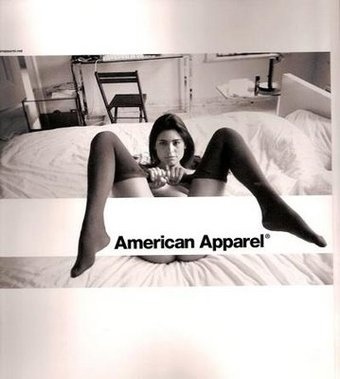Everywhere
we go we are bombarded with advertisements which show us the ideal image of women.
In our modern capitalist society you can't avoid these pictures which tell us
how to look and what to buy to make you look that way. Bodies and beauty are
easily obtainable, if you only strive to be thinner, whiter and overall more
beautiful than you are now. These images will contribute to the picture you
build in your head what it means to be successful, beautiful or powerful, when
your conscious of this process or not. Especially young girls who aren't aware
of the powers of the media will be effected by this. The media will shape their
idea of aesthetic beauty and influences how they think their body should look. The
result is that a lot of them will try to pursue these ideals and harm
themselves along the way.
The commercials also show us how
to interact with others. This could be in literal sense when they show them how
to be passive when they are surrounded by men or it could be displayed in their
body language, when they show the woman on display, not directly confronting
her spectators. The advertisements favor the white straight male as we are used
to in our patriarchal society and display them in a powerful position. You can
see that the women are defined by the to-be-looked-at-ness, a concept Laura Mulvey introduced in her
article 'Visual Pleasure and the Narrative Cinema': "In their traditional
exhibitionist role women are simultaneously looked at and displayed, with their
appearance coded for strong visual and erotic impact so that they can be said to
connote to-be-looked-at-ness."(837) The women in these ads are aware of
their audience and the reason that they are there: their aesthetic beauty is
displayed for the viewing pleasure of the male spectator.
This to-be-looked-at-ness is manifested
in different ways through advertising. One example is the advertisements of
famous brands in high fashion; they display the female body similar as in the
traditional paintings John Berger studied in his article "Ways of
Seeing": 'It is the expression of a woman responding with calculated charm
to the man whom she imagines looking at her - although she doesn't know him.
She is offering up her femininity as the surveyed."(55) This Dior ad is a
perfect example of this. Another example is the displaying of the female body
emphasizing the sexual availability of this individual as seen in this
advertisement of American Apparell.


The major
problem of these images are that it becomes difficult to distinguish this media
reality from the reality of the world we actually live in. Susan Bordo explains
how this influences women in a negative way in her article "The Woman Who
Doesn't Eat Much":
"Like the knowledge of our
own mortality when we are young and healthy, the knowledge that Cher's physical
appearance is fabricated is an empty abstraction; it simply does not compute.
It is the created image that has the hold on our most vibrant immediate sense
of what is, of what matters, of what we must pursue for ourselves."(104)
This is a
trend you can see through all forms of pop culture that is available to us. The
people are superimposed and always perform; they form a representation of
themselves that would fit in our society. This means that the women have the
same look which is defined as aesthetically pleasing and often dress scarcely
to display their bodies. There are of course examples of people who refuse to
conform to these images, but there aren't a lot of women who get a chance to do
that and become famous and successful.
An
alternative way for advertising is a difficult subject, because I believe the
system has manifested itself for way to long and is way too strong to be
eradicated any time soon. I do believe though that things are changing and that
more and more people become aware of the negative effects the advertising has
on the society is a whole. Personally I think the change has to start by
limiting the powers of major corporations legally. If they don't have the power
to advertise at every street corner, major event, food products, television
etc. this will give you back the choice to look for these images instead of
them being forced on you. Also legislation about what is permitted to do with images
in pre-production and how much nudity is permitted in commercials would be a
step in the right direction. Also if there would be more women in higher
functions in these corporate businesses, there would be a better representation
of what women want to see in these advertisements. I believe this is an
important step to get to shape an alternative for these commercials, which will
strive to gender equality in these images.
Bibliography
Berger, John. Ways of Seeing. London: Penguin Group. 1972
Bordo, Susan. Unbereable Weight: Feminism, Western Culture, and the Body. University of California Press, 1993.
Mulvey, Laura. "Visual Pleasure and the Narrative Cinema." Film Theory and Criticism: Introductory Readings. Eds. Leo Braudy and Marshall Cohen. New York: Oxford UP, 1999: 833-844.
Hi,
ReplyDeleteYes indeed things are changing. For instance I don't know if you remember the example that was discussed yesterday during class about JCPenney on 34th street displaying their clothing on real people inspired mannequins. Some retailers are waking up and tending to those whose looks have been long ignored.